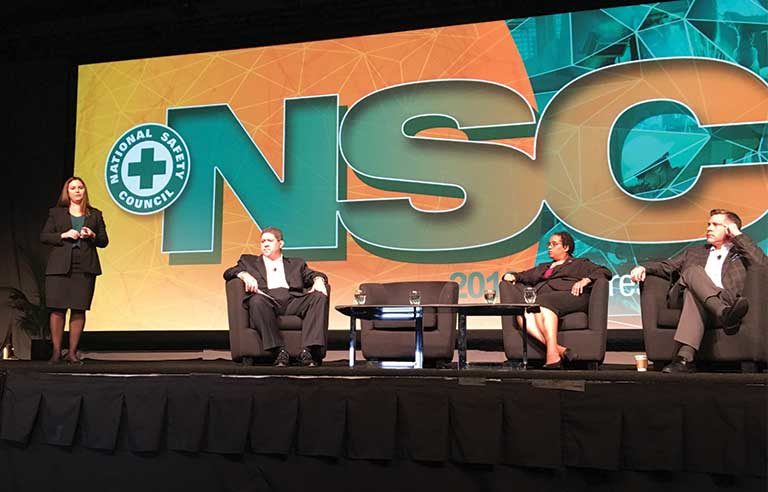‘We’re just scratching the surface’ with new tech safety solutions: Executive Forum panelists

Houston — New technologies are having an impact on workplaces in numerous industries worldwide, and will have a profound effect on future workforces, according to the expert panel featured during Monday’s Executive Forum, “Industry 4.0 – EHS in the Future of the Workplace,” at the 2018 National Safety Council Congress & Expo.
Advancements in technology will bring about a need for new skills and growth among workers needed to fill tech-focused jobs.
“I think today we actually have a shortage of the people we’re going to need in the next five to 10 years to do this kind of work,” said Lydia Boyd Campbell, chief medical officer for IBM’s Corporate Health and Safety Organization. “We are looking to educate people, even at the high school level, to start having the training they need to enter the workforce without a four-year degree. They’re called new-collar jobs. They’ll be ready to enter the workforce in those jobs, with those right skills.”
Campbell began her presentation by sharing the numbers 2.3 million, 340 million and 160 million. According to annual estimates from the International Labor Organization, 2.3 million people die as a result of an occupational incident or illness, 340 million workplace incidents occur, and 160 million people suffer workplace illnesses.
Campbell discussed IBM’s use of cognitive computing systems to provide data that can lead to workplace EHS solutions.
“I believe that we’re just scratching the surface,” she said. “We’re at the tip of the iceberg of what these technologies will be able to eventually help us accomplish and the impact we’ll be able to have on those very concerning numbers.”
Michelle Garner-Janna, executive director of corporate health and safety at Cummins Inc., said technology such as collaborative robots are not intended to replace workers, but enhance their skills.
“We’re really focusing on how to integrate these new technologies with our employees,” Garner-Janna said. “It’s about, ‘How do we integrate these processes and do it in a safe manner?’”
James Dorris, vice president of environmental, health and safety for United Rentals, said the demand for blue-collar jobs will remain in many industries.
“In the next five to seven years, 50 percent of jobs will be construction and skilled type of jobs that will be available,” Dorris said. “I don’t think the automation immediately has the impact that people are perceiving.”
The session’s moderator, Evaristo Leonardi, vice president of global operations support at AES, said his company’s work in the energy sector is welcoming technology to enhance professionals in the industry.
“There’s a tremendous opportunity of retraining people that are working in power plants at this time and deploying them into solar and wind,” he said.
Garner-Janna encouraged organizations to continue testing new technologies to enhance EHS in their workplaces and shared her own experience.
“I recently put in some budget for Industry 4.0 and the question was, ‘Is this going to save injuries? Can you tell me how many injuries this is going to save?’” she said of the approximately 10 different technologies she proposed for testing. “My answer was, ‘No, I can’t tell you. But what I can tell you is, out of these 10, I may have two that are going to be great. They are going to save injuries, but I can’t tell you how many or in what areas.’ I know that we’ll have something that will work.
“I can also tell you if we don’t invest and we don’t test, we’re definitely not going to have improvements,” Garner-Janna said. “The idea is to see what’s out there and try things out. Figure out what works. Move on from things that don’t work and keep iterating.”

